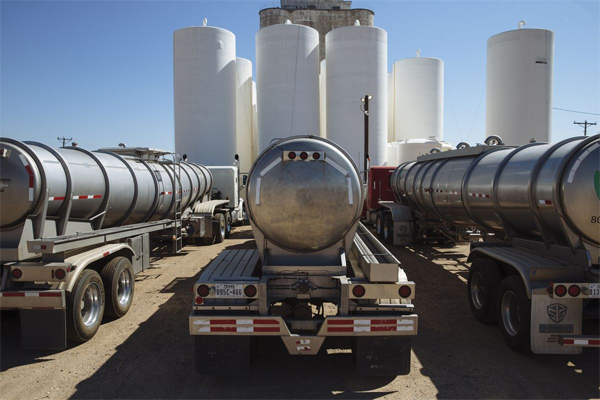
Myra P. Saefong and Williams Watts, Market Watch
SAN FRANCISCO/NEW YORK
EnergiesNet.com 09 08 2022
Oil futures fell on Wednesday, with U.S. and global benchmarks settling at their lowest since January, pressured by concerns that further interest-rate hikes by the Federal Reserve and a drop in China’s oil imports suggest a slowdown in energy demand.
Prices gave up earlier gains on the back of a threat from Russian President Vladimir Putin to cut off energy supplies if price caps are placed on the country’s oil and gas exports.
Price action
- West Texas Intermediate crude for October delivery CL.1, 0.40% CL00, 0.39% CLV22, 0.39% fell $4.94, or 5.7%, to settle at $81.94 a barrel on the New York Mercantile Exchange. Prices for the front-month contract settled at their lowest since Jan. 11, according to Dow Jones Market Data.
- November Brent crude BRN00, 0.31% BRNX22, 0.31%, the global benchmark, lost $4.83, or 5.2%, to close at $88 a barrel on ICE Futures Europe, for the lowest finish since Jan. 24.
- Back on Nymex, October gasoline RBV22, 0.51% lost 4.5% to $2.3077 a gallon.
- October heating oil HOV22, -0.62% added 0.3% to $3.586 a gallon.
- October natural gas NGV22, 0.70% dropped 3.7% to $7.842 per million British thermal units.
Market drivers
Oil prices shook off early gains that came on the back of Putin’s threats of shutting off supply to those willing to participate in the Group of Seven’s oil price cap plan.
Putin, speaking at a conference in Vladivostok, said Russia would walk away from energy contracts if the G-7 industrialized nations follows through on a plan to cap prices on Russian oil as part of an effort to limit Moscow’s ability to fund its invasion of Ukraine.
Oil’s fall after Putin’s threat “tells you quite a lot about what a mix of the U.S. dollar at 20-year highs, Chinese zero-COVID policy, a near-certain coming European recession this winter and what looks increasingly like a potential global recession are doing to demand expectations,” said Troy Vincent, senior market analyst at DTN.
“This is a disastrous macroeconomic cocktail for total oil demand, despite the fact that Europe will likely burn more heating oil this winter than they have in decades as it is far more economical than natural gas at current European prices,” he told MarketWatch.
Oil prices started coming “unraveled after The Wall Street Journal reported that the Federal Reserve was more than likely is going to raise interest rates by 75 basis points at the next meeting,” said Phil Flynn, senior market analyst at The Price Futures Group. Efforts by the Fed to tame inflation have fed concerns over a recession, which could hurt demand for oil.
“There seems to be a lot of liquidation on fears that the economy is going to take a turn for the worse,” Flynn told MarketWatch. There are also “whisper numbers that we should see an increase in oil supplies in this week’s inventory report after the big release from the Strategic Petroleum Reserve.”
On average, however, analysts expect the Energy Information Administration on Thursday to report a decline of 1.8 million barrels in U.S. crude supplies for the week ended Sept. 2, according to a survey conducted by S&P Global Commodity Insights. The survey also showed expectations for weekly inventory declines of 1.5 million barrels for gasoline and 1.1 million barrels for distillates. The data come out a day later than usual because of Monday’s Labor Day holiday.
Separately, in a monthly report released Wednesday, the EIA lifted its 2023 price forecasts for WTI and Brent oil, as well as U.S. natural gas.
There are also concerns about slow demand from China, Flynn said. Customs data Wednesday showed that China’s crude oil imports in August fell 9.4% from a year earlier, according to Reuters.
It seems like a lot of traders are bailing on oil at this point, said Flynn. “It’s a focus more on insurance about an economic slowdown, as opposed to the current tight supply situation.”
Oil futures have retreated sharply from early March levels, when crude traded at roughly 14-year highs following Russia’s late February invasion of Ukraine, with weakness tied to worries over the demand outlook.
The Associated Press contributed to this report.
marketwatch.com 09 07 2022











